Este material también está disponible en español.
Diagnosing Home Citrus Problems includes information on all the commonly encountered dooryard citrus problems encountered in Arizona. Problems/disorders are grouped into three categories: problems with fruit, problems with leaves, and problems with stems, branches and entire tree. Symptoms, causes and control measures are given for each disorder.
Problems of fruit
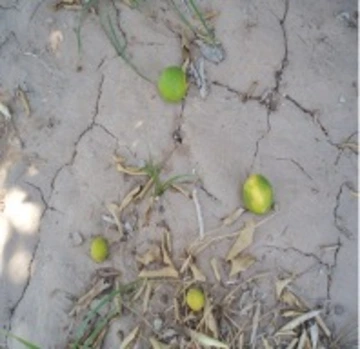
Fruit Drops Prematurely
Causes:
Natural fruit drop occurs during the spring. Trees shed excess fruit they cannot support. Fruit drop is heavier during hot, dry and windy weather and on trees receiving inadequate irrigation or inadequate nitrogen fertilization.
Controls:
Increase the amount and frequency of irrigation during periods of high heat, low humidity and strong winds. Do not under fertilize.
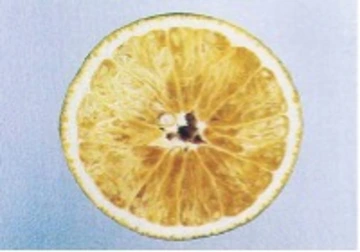
Dry Juice Sacs (Granulation)
Causes:
Oranges, grapefruit and tangerines are affected; especially those budded on rough lemon, volkameriana, macrophylla and trifoliate rootstocks. Cold injury may also result in granulation of fruit.
Controls:
Good fertilization and nutrition practices and early season harvesting may alleviate this problem.
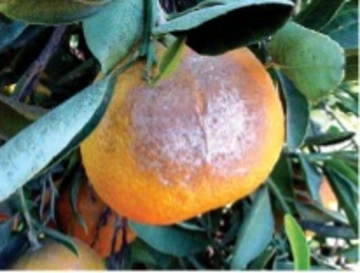
Sunburn
Causes:
Sun scorch of fruit most directly exposed to sun during late spring, summer and early fall.
Controls:
Seasonal, no control necessary.

Fruit Splitting
Causes:
Inconsistent watering and fertilization practices or sunburn.
Controls:
Maintain adequate moisture and follow recommended fertilizer applications. Infre- quent, but deep watering maintains soil moisture at a more even level than does frequent, shallow irrigation. Soil mulches may also be used to enhance moisture retention.
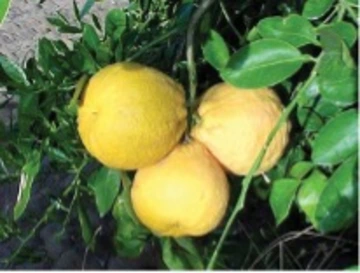
Thick Peel and Puffy, Misshapen Fruit
Causes:
A natural response of young citrus to the heat and low humidity of the desert. Can be found on older citrus, especially grapefruit and oranges that have been over-fertilized.
Controls:
Follow recommended cultural practices. Reduce nitrogen fertilization rates.
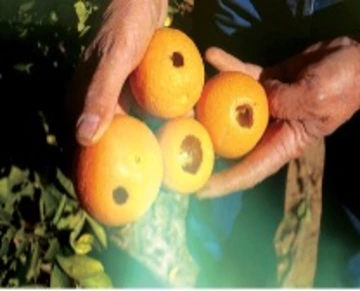
Holes
Causes:
Birds, chewing insects, or rodents.
Controls:
Bird netting, fencing, and removal of rodent nests from trees. Insect damage of this type requires no control.
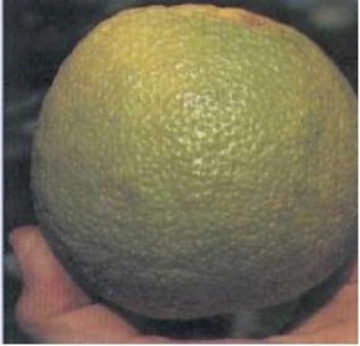
Yellow Fruit Turns Green
Causes:
Fruit on certain varieties of citrus, such as Valencia orange may turn from yellow to green as weather warms in the spring.
Controls:
None required. Fruit quality is not affected.
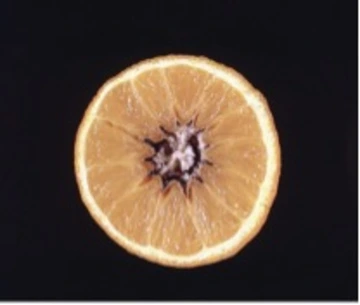
Black Fungus Inside Fruit
Causes:
Alternaria fungus. Most common following rainy winters or springs.
Controls:
None available. Dispose of affected fruit.
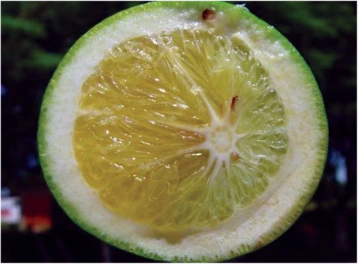
Lopsided Fruit with Aborted Seed
Causes:
Citrus stubborn disease, a disease caused by a phytoplasma and spread by a leafhopper; OR Citrus greening, a disease caused by a bacteria and spread by the Asian Citrus Psyllid (See below).
Controls:
None available. Contact Arizona Cooperative Extension if this symptom is observed.
Problems of leaves
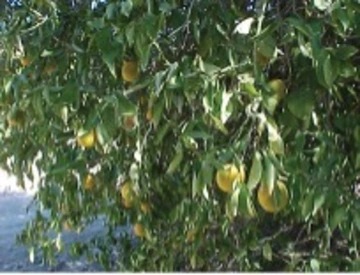
“Cigar” Leaf Curling
Causes:
Moisture stress, insufficient water.
Controls:
Increase expanse and depth of watering. Provide at least 3 drip emitters per tree. If basin watering is used, the basin should extend out to the edge of the branches and be enlarged as the tree increases in size. Wet soil to a depth of 2 to 3 feet.
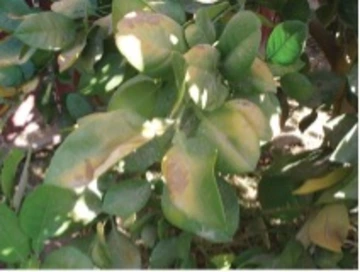
Large “Bleached Out” or Yellow Patches on Individual Leaves
Causes:
Sun-scorch of leaves most directly exposed to the sun during late spring, summer and early fall. Can be distinguished from salt burn in that sun scorch occurs mostly on the south and west sides of the tree.
Controls:
Seasonal, no control necessary.

Distortion, Curling and/or Cupping Especially on New Growth with Leaves Becoming Sticky
Causes:
Aphids.
Controls:
Hose off with water or spray with a mild soap solution (mix one tablespoon of liquid dish washing detergent in one gallon of water).
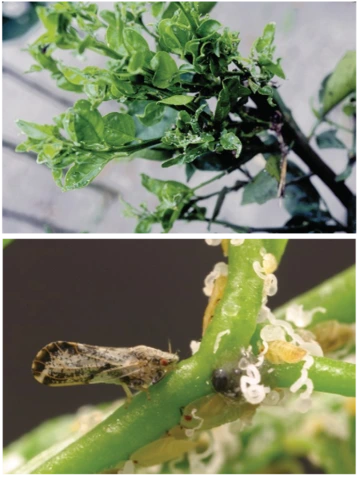
Distortion, Curling, Cupping and/or Notching, Especially on New Growth with Appearance of Waxy Filaments
Causes:
Asian Citrus Psyllid.
Controls:
Use water or soap solution as with aphids, or an insecticide. Contact Arizona Coop- erative Extension if this symptom is observed.
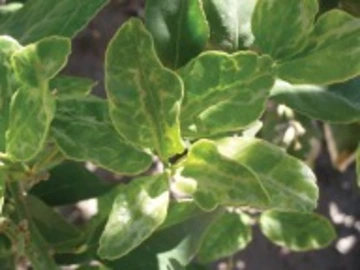
Leaf Streaking and Distortion
Causes:
Thrips - flea-like insects that rasp the leaf bud and newly developing leaf causing distortion or cupping of the leaf and pale yellowish, silverish or whitish longitudinal streaking. Exterior of fruit may also be scarred by thrips (no effect on fruit quality).
Controls:
No control necessary, damage is only cosmetic.
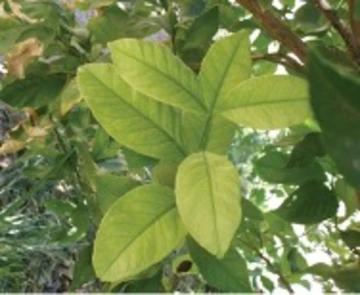
Pale Green Leaves with Darker Green Veins
Causes:
Nutrient deficiencies of iron and or zinc. Zinc deficient leaves are undersized, while iron deficient leaves are normal-sized. Occurs mostly on the newer growth.
Controls:
Apply chelated forms of iron and zinc.
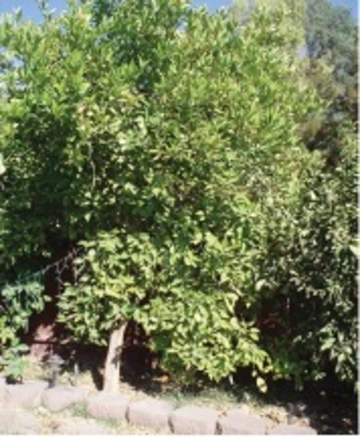
Completely Pale Green or Yellowish Leaves
Causes:
Nitrogen deficiency, over-watering. Occurs mostly on the older growth. Leaves also fall prematurely.
Controls:
Apply nitrogen containing fertilizer - follow recommended watering and fertilization practices.
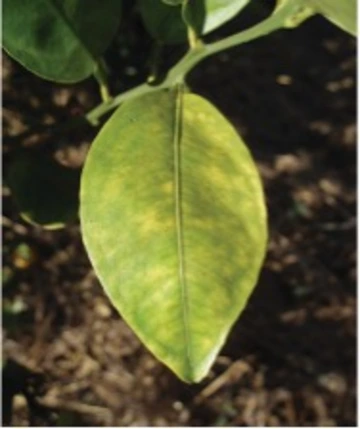
Leaves with Asymmetrical Green Mottling and/or Prominent Midvein
Causes:
Citrus greening, a disease caused by a bacteria and spread by the Asian Citrus Psyllid (See above). Symptoms should not be confused with nutrient deficiencies.
Controls:
No control. Contact Arizona Cooperative Extension if this symptom is observed.
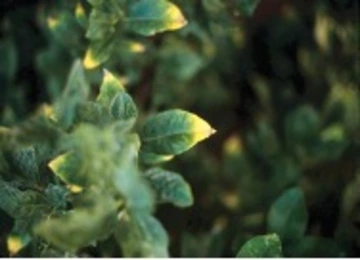
Tip or Marginal Leaf Burn
Causes:
Salt accumulation from irrigation and fertilization. Damage occurs on leaves on all sides of the tree.
Controls:
Leach out excess salts by applying large amounts of water to the soil periodically.
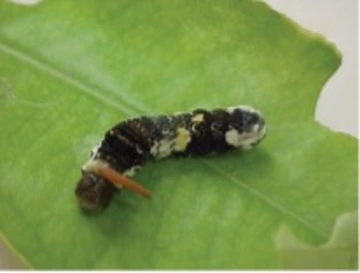
Leaves Cut, Chewed
Causes:
Tattered edges - Orange Dog Caterpillar, Grasshoppers, Crickets, Weevils. Round edges - Leaf-Cutter Bees.
Controls:
Hand-pick caterpillars or spray with Bacillus thuringiensis (BT). Leaf-Cutter Bees are beneficial, no controls are necessary or recommended.
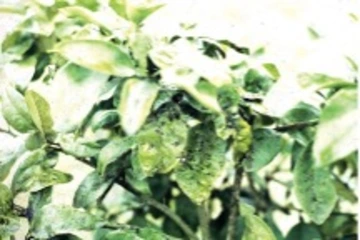
Black, Sooty Powder on Leaves
Causes:
Sooty mold fungi, resulting from “honeydew” secretion from sucking insects such as: aphids, mealybugs or scale. Does not usually appear under dry, desert conditions.
Controls:
Prevent insect feeding. Use a mild soap solution to wash away sooty mold.
Problems of branches, trunk or entire tree

Lack of Growth and Stunting of Entire Tree
Causes:
Tree planted too deep, improper watering and or fertilization, root rot fungi.
Controls:
Plant citrus so that the top of the root ball is level with (or slightly above) the sur- rounding soil. Follow recommended watering and fertilization programs. No control possible for root rot fungi.

Patches of Pealing or Scaling Bark on Trunk or Major Limbs
Causes:
Psorosis bark scaling virus disease. More common on older trees.
Controls:
No control possible.

Lesions (Often Exuding Resin) on the Lower Section of the Trunk
Causes:
Foot Rot Fungus on all citrus or Rio Grande Gummosis on grapefruit.
Controls:
No control possible. Remove affected tree and plant citrus in a well-drained location.

Individual Limb Die-Back on Citrus
Causes:
Sooty Canker. Bark will peel off, revealing a black fungus beneath.
Controls:
Removing infected wood by pruning back at least 12 inches below diseased portion of branch(s). Sterilize pruning shears between cuts.

Individual Limb Die-Back on Persian Lime
Causes:
Wood Pocket viral disease.
Controls:
No control possible, eventually leading to death of entire tree.

Individual Limb Die-Back on Lemon and to a Lesser Extent Orange, Grapefruit and Tangelo
Causes:
Various fungal wood rots including: Coniophora, Antrodia and Nodulisporium.
Controls:
Removing infected wood by pruning back at least 12 inches below diseased portion of branch(s). Sterilize pruners between cuts.

